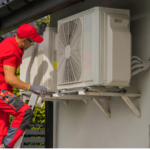In an integrated energy system, energy supply and demand sectors interact more closely in order to facilitate a reduced energy demand and the quick scale-up of renewable energy sources. Based on the interplay of generators and consumers in a well-connected energy infrastructure, inefficient fossil-based technologies and back-up capacities can be phase-out more swiftly. An advanced integration of sectors’ energy demand prevents the societal costs of stranded assets. It allows for the use of existing infrastructure more efficiently, harvesting the potential of demand-side response and other flexibility options.
Main features of such a system include:
a) Full compatibility with the goals of the Paris Agreement and climate neutrality by 2040.
b) Energy efficiency first: including energy demand reduction across all sectors due to increased ambition and implementation of stronger energy efficiency policies and measures.
c) Electrification of the buildings, transport and industry sectors based on electricity sourced from renewables. The power sector can be decarbonised based on the full deployment of renewable sources. Heat supply should also be 100% renewable energy-based. In this context, buildings must also be an integral part of the energy system after their upgrade through deep renovation measures to improve their energy performance. The same applies for the transport sector (mainly individual and passenger transport) which needs to be coupled to modal shift (road to rail, public transport and cycling, car-sharing). The sectors where reducing emissions is the most difficult such as the steel and chemicals sectors or aviation, long-distance shipping and heavy-duty road transport could partly rely on gaseous (renewable hydrogen) or liquid (synthetic) fuels sourced from renewable electricity. Falling wind and solar prices are making direct and indirect electrification sourced from renewables a solid pillar of a future energy system.
d) Mobilising demand-side response together with other flexibility options such as electricity and heat storage or batteries facilitate the grid integration of the increasing (variable) renewable energy sources solar PV and wind energy.
e) In conjunction with the above measures, product design, production processes and business models need to be in line with EU climate-neutrality and circularity and resource efficiency objectives. This extends to the materials used including reduced carbon and environment footprints of intermediary products such as cement, chemicals and steel; increased use of secondary raw materials; design for reuse, repair, upgrade and wider circularity; and shifts in energy sources away from fossil-based to renewables.


